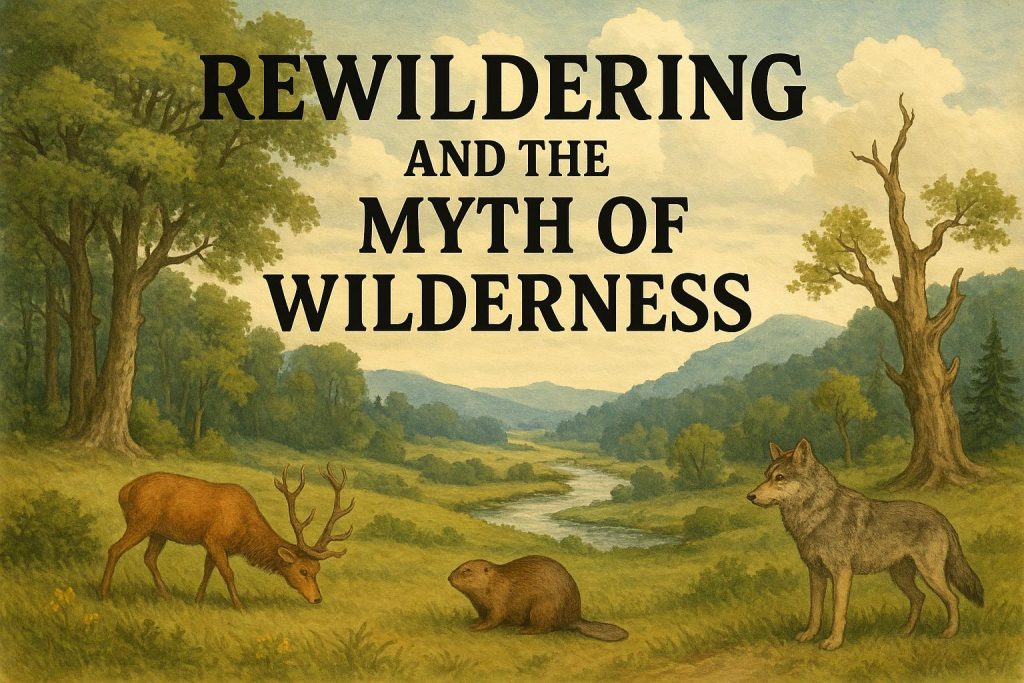
Rewildering and the Myth of Wilderness
Introduction to Rewildering
Rewildering, sometimes referred to as rewilding, represents a groundbreaking approach within environmental conservation, focused on rejuvenating ecosystems and preserving natural processes in core wilderness regions. This methodology strives to reintroduce native species and rehabilitate land back to its untouched state, ultimately enabling ecosystems to maintain themselves autonomously, devoid of human intervention. This strategy has been gaining traction globally as a potent means to counteract the accelerating crash of biodiversity and the pressing threat of climate change.
The Concept of Wilderness
The term wilderness often conjures images of vast, untouched landscapes in the human imagination, ostensibly unblemished by human intervention. While this perception captures a certain idyllic essence, it is largely a romanticized fiction. In reality, many landscapes celebrated as pristine wilderness have been shaped and managed by human activities over thousands of years. Indigenous communities, for instance, have traditionally interacted with and modified their environments through methods such as controlled burning, cultivation, and animal management, which have been instrumental in shaping the ecosystems we see today. This legacy disrupts the conventional narrative separating pure wilderness from anthropogenically influenced environments.
Rewildering Objectives
The objectives of rewildering are multifaceted, targeting several key aspects of ecosystem revival and preservation. Firstly, increasing biodiversity stands at the forefront of this endeavor, as diverse ecosystems are more resilient and capable of withstanding environmental changes. The recovery of native species is closely intertwined with this, given that these species are best suited to thrive in their natural habitats and play significant roles in ecological balance. Additionally, rewildering aims to facilitate the natural occurrence of processes such as flooding and wildfires, which are integral to certain ecosystems’ health. For example, removing man-made structures such as dams can restore historic river systems, allowing them to follow their natural courses. Furthermore, the reintroduction of keystone species, such as wolves, has been a successful strategy in maintaining ecological equilibrium, as evidenced by notable projects like those in Yellowstone National Park.
Challenges in Rewildering
Despite its promising objectives, rewildering is not without its challenges, both practical and ethical. One of the most prominent hurdles is the requirement for expansive, contiguous land areas to ensure that ecosystems can function naturally. This demand often clashes with other land-use priorities, such as agriculture and urban development, leading to conflicts over space and resources. Additionally, reestablishing ecosystems is a complex endeavor that must be approached with meticulous planning to avoid adverse outcomes. For instance, if not carefully executed, the reintroduction of certain species or the restoration of natural processes could inadvertently disrupt local human communities, leading to negative social or economic impacts.
The Role of Human Perception
Human perception and understanding of wilderness significantly influence the acceptance and success of rewildering projects. Many people nurture idealized views of wilderness as a distinct and untouched realm, free from human influence. This can lead to resistance to rewildering initiatives perceived as invasive or unnecessary. However, acknowledging that human influence has shaped ecosystems over centuries can foster more nuanced and effective conservation strategies. By redefining our relationship with the natural world, individuals and societies can embrace a more integrated approach to environment stewardship, one which respects both historical interactions and modern needs.
Beyond the theoretical and practical aspects of rewildering lie numerous successful projects and ongoing efforts that offer a wealth of insights. By exploring the resources available via conservation organizations and scientific publications, one can delve deeper into these initiatives. These sources illuminate how current global rewildering initiatives are shaping the landscape of biodiversity conservation and enhancing climate resilience. Understanding and learning from these successes provides valuable lessons for future projects and validates the significance of rewildering as a conservation strategy in the contemporary world.
By examining how humans historically interacted with their environments and recognizing the shifts needed to restore natural balance, rewildering not only seeks to repair past ecological damages but also casts a hopeful vision for the future. Nonetheless, its success hinges on the delicate balance of respecting historical influences, managing present realities, and planning for future sustainability, all while preserving the invaluable heritage that the natural world represents.